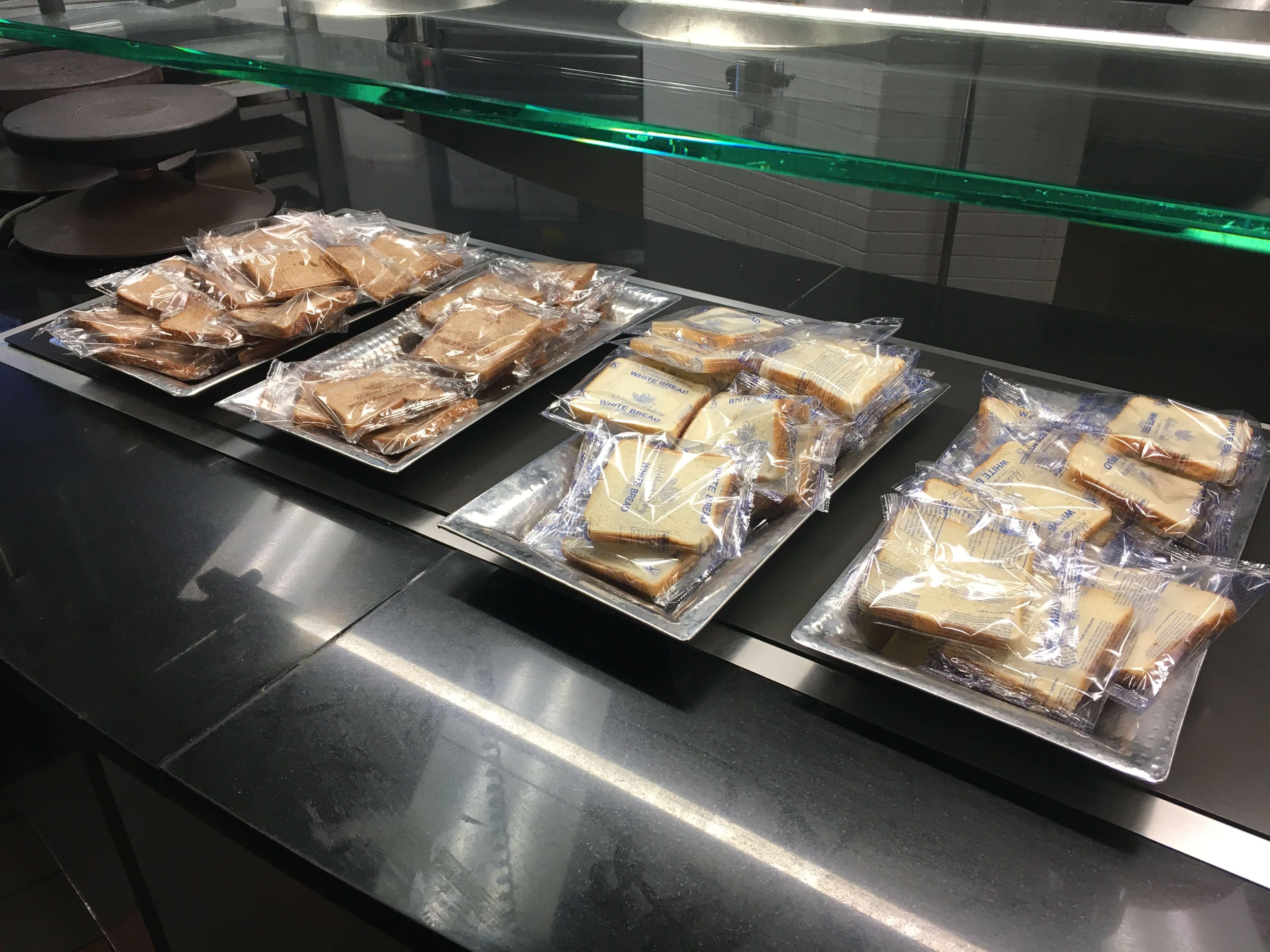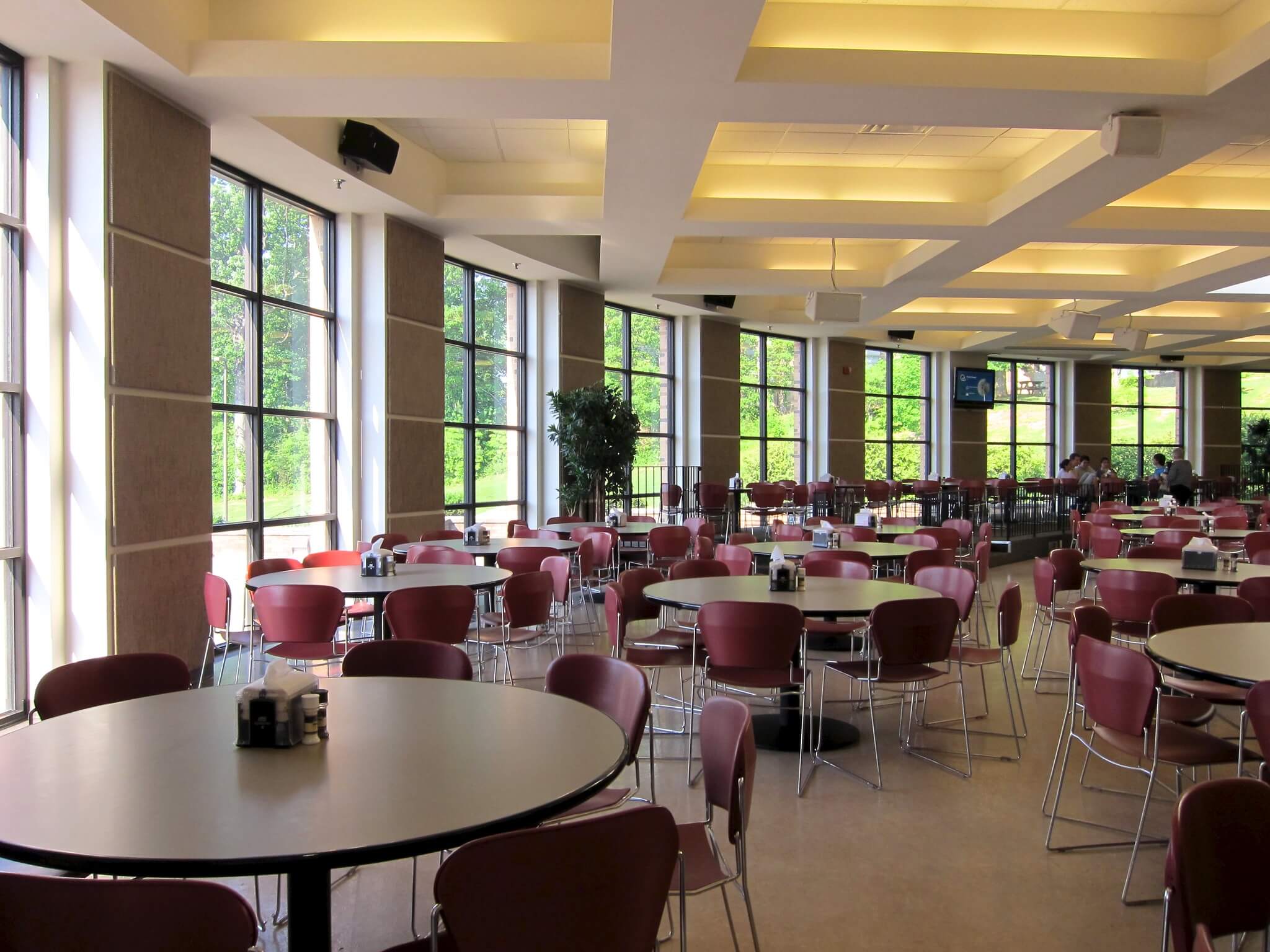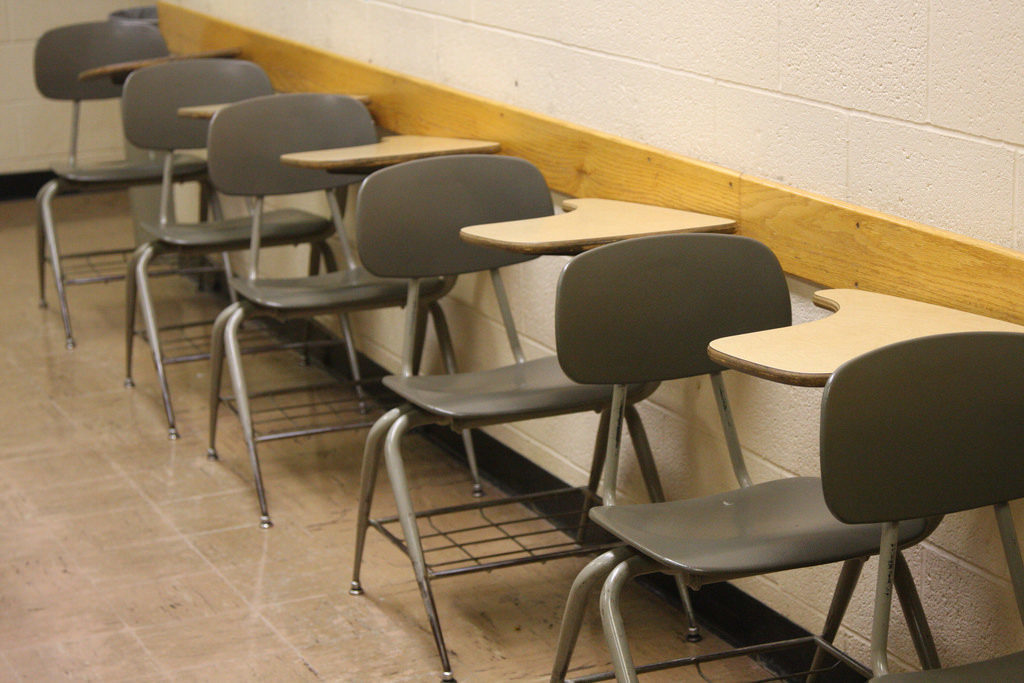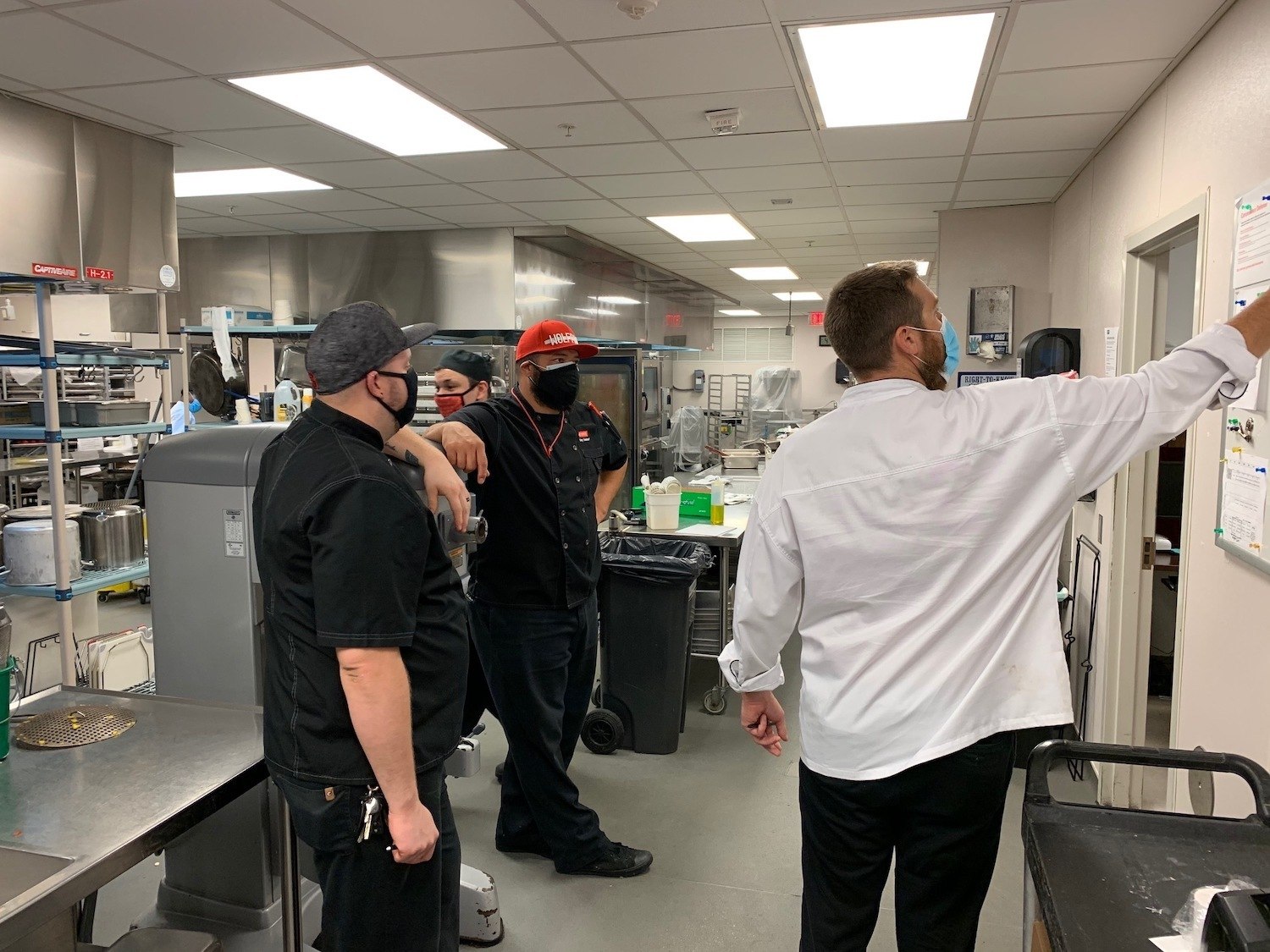
NC State University
Hoarded ketchup, frozen beef, quarantine care packages: What happens when school’s out, then in, then out again.
Almost as quickly as college campuses began reopening this month, they started slamming shut. The University of North Carolina at Chapel Hill was the first reopened campus to fall, abruptly pivoting to online learning last week after nearly 200 students tested positive for Covid-19; since the announcement, more than 500 additional cases have been confirmed.
Similar scenarios are playing out at other large campuses: Notre Dame shifted to remote instruction for two weeks after 147 people tested positive for the virus. Despite the new precautions, the number of infections had climbed to nearly 500 by Tuesday. A New York Times database counted more than 26,000 cumulative cases at more than 750 college campuses on Wednesday morning, including 972 at the University of Alabama at Birmingham and 727 at the University of Central Florida. Sixteen schools had clocked more than 300 infections each by mid-week.
Soon after UNC pivoted to online learning, the school asked students to cancel their housing contracts. By August 25, the campus housing occupancy rate had fallen to 13.7 percent. And as housing demand shrinks, campus dining operations are also contracting. Twenty miles away, N.C. State University canceled in-person classes a few days after UNC. By Tuesday, on-campus meal counts had already sunk by about 30 percent.
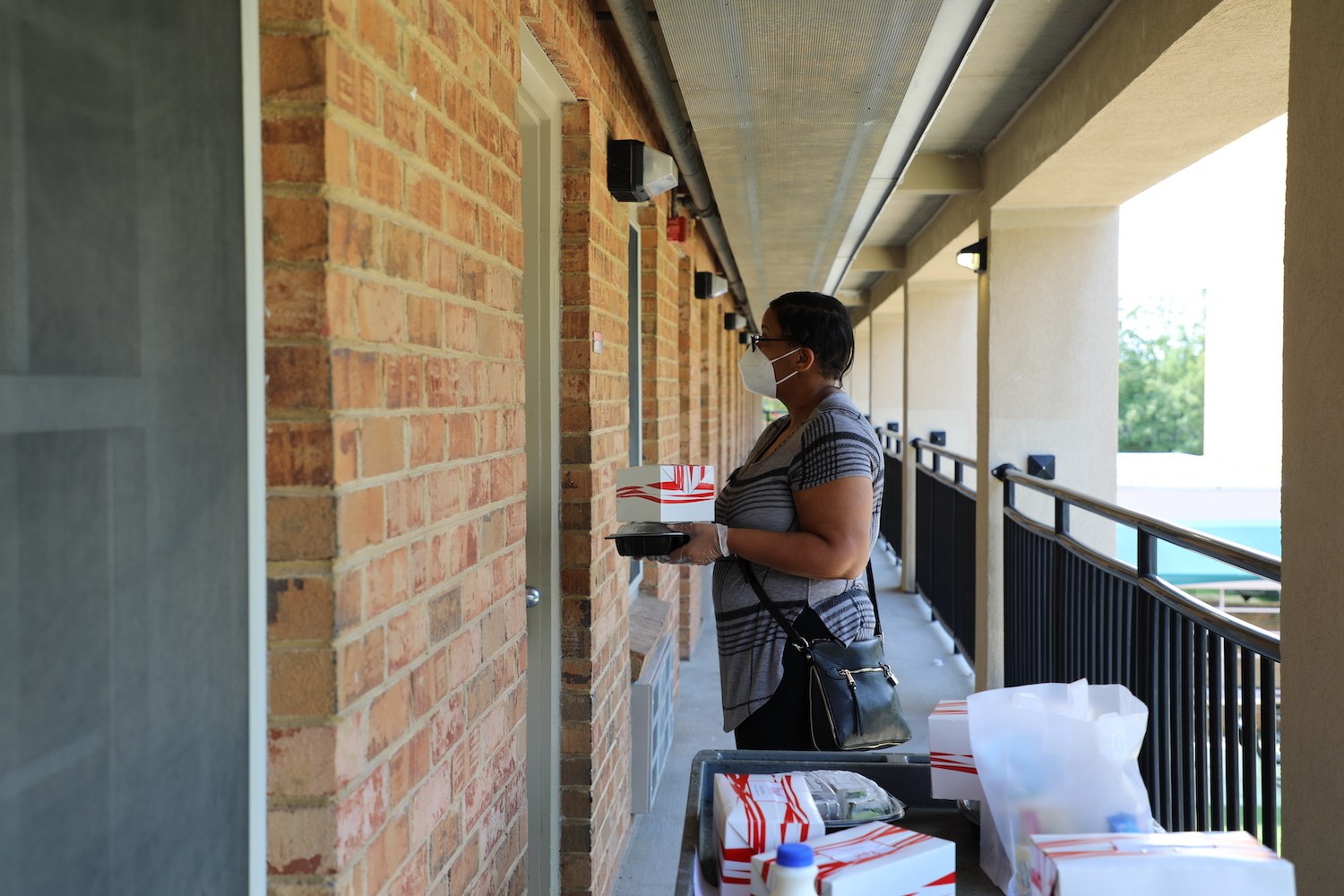
A member of the NC State dining team delivers a meal to a student quarantined in Avent Ferry Residence Hall.
Jane Neeley
“I sure could go for some precedented times right now,” said Jennifer Gilmore, director of marketing and communication for campus enterprises at N.C. State, quoting a post she saw online. Case in point: When we spoke on Tuesday, N.C. State had no plans to close dorms. That evening, the university announced seven new clusters. By the time this story published, dorms were closing.
Since late last week, Gilmore has been scrambling to figure out which on-campus restaurants can stay open as students move back in with their parents or into off-campus housing. Popular restaurants like Chick-fil-A, Starbucks, and a smoothie spot will remain operational for now. “I think a lot of people are afraid that as soon as you say you’re going to online learning that you’re going to reduce them to a dining hall and a convenience store and a few vending machines,” she said.
Already, the university’s dining halls have undergone one round of de-densification: They initially opened at 50 percent capacity, consistent with the state’s current reopening phase. Then, on August 21, the Centers for Disease Control and prevention released a new set of guidelines recommending fewer students per thousand square feet, and the university reduced seating by an additional 20 percent. The university is also allowing students to take more meals to go, and to order from some campus restaurants via Grubhub.
“I sure could go for some precedented times right now.”
It’s still unclear exactly how many students will leave campus, Gilmore said. “We’ll see students canceling their meal plan and their housing over the next week or so—at this point, I don’t think we’ve set a deadline yet.” The campus is still processing about 10,000 food transactions per day.
Amid all this uncertainty, it’s difficult to figure out how to order ingredients. When all but about 700 students left abruptly last spring, the dining hall stopped purchasing just about everything but produce, said Keith Smith, director of operations and sustainability. In the coming weeks, he’ll work with the school’s food suppliers to adjust menus and move perishable ingredients through the kitchens. For now, it’s triage mode: “We’re trying to decrease inventory on campus to meet the demands of the people,” Smith said.
One thing is certain: N.C. State will have plenty of condiments. Over the summer, fearing supply chain disruptions, Smith began stockpiling Ranch dressing and ketchup. “We’d just buy, like, 10 cases every week and stick them to the side,” he said.
They’ve even considered aesthetics: Certain fats don’t look appetizing when cold and congealed.
Other school food providers are dealing with ingredient backlogs much heavier than ketchup packets. Last March, as campuses shuttered, Bon Appétit Management Company, a food service provider operating on more than 100 campuses, asked its distributors to freeze the Certified Humane ground beef it typically serves fresh. The next wave of cattle matured before campuses reopened, so they rewrote the contract to have the beef frozen at the manufacturer level. The company has now stockpiled several months’ supply of ground beef, and chief strategy and brand officer Maisie Ganzler said she hopes they’ll be able to use it all before the next wave of cattle matures. It was a choice, she added, between guaranteeing students Certified Humane beef or guaranteeing fresh beef. She chose humane.
Still, there’s no telling when the frozen beef might get eaten. “When people come back, we’re going to be selling a lot less hamburgers than we used to, because the whole model of going to the grill and ordering a hamburger and waiting for it to be cooked to order is not happening in most places,” Ganzler said. “And a hamburger is not the type of thing I would recommend cooking ahead, right?”
While campus dining operations are serving fewer meals than ever in most places, demand is already spiking for one new service: Quarantine meals. At N.C. State, more than 110 of the 166 units available for students in quarantine are already in use; an additional 1,234 students are isolating off campus.
“In a normal circumstance, we would never be giving a student a shelf-stable soup. But in this circumstance, if they’re having gastrointestinal distress and they don’t have refrigeration available to them, but they do have an ability to heat something, then they’re going to wind up with a shelf-stable soup.”
The number of quarantined students rose quickly after the first cases were confirmed. At first, students in isolation were allowed to order food from anywhere on campus and have it delivered. Now, administrators have consolidated quarantine meal prep into the school’s catering kitchen. Instead of trying to deliver everything while it’s still hot, they typically cook the meals and then refrigerate them so that students can reheat them at their leisure. (Each dorm room set aside for students in isolation includes a fridge and a microwave.)
At Bon Appétit, chefs spent the summer figuring out ways to adjust their recipes to adapt meals for grab-and-go or quarantine. Fruits are cut in thicker slices to prevent fast degradation. They began focusing on foods that taste great cold, like vermicelli noodle bowls. They’ve even considered aesthetics: Certain fats don’t look appetizing when cold and congealed.
Because the company serves so many different campuses, they also have to consider every possible quarantine circumstance. They have a special set of menu recommendations for students experiencing gastrointestinal issues, for instance. They also can’t assume every student has a microwave and a fridge. “In a normal circumstance, we would never be giving a student a shelf-stable soup. But in this circumstance, if they’re having gastrointestinal distress and they don’t have refrigeration available to them, but they do have an ability to heat something, then they’re going to wind up with a shelf-stable soup,” Ganzler said.
At this point in the semester, it’s impossible to know whether students will reconvene later in the fall, or what the winter might hold for college campuses. Many schools won’t even start classes until after Labor Day. The goalpost is already shifting for schools that promised to reconvene in person this year: Eastern Michigan University, the University of Maryland, and Brown University have all postponed the start of on-campus learning. At schools like N.C. State, where in-person classes are cancelled for now, administrators still aren’t even sure how many students will be using the dining hall in the coming weeks.
“We know that anything is possible,” Gilmore said. “We try to speculate on what those scenarios might be so that we can plan accordingly.”


